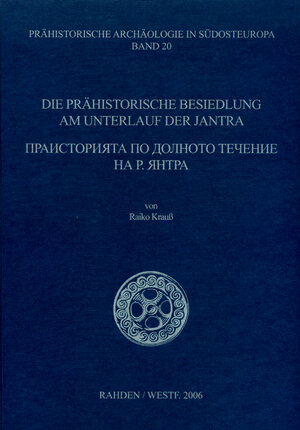
×
![Buchcover ISBN 9783896465917]()
Die prähistorische Besiedlung am Unterlauf der Jantra vor dem Hintergrund der Kulturgeschichte Nordbulgariens
von Raiko KraussDie Arbeit basiert auf Surveys, die 1997-2001 im Umfeld römischer Kastelle durchgeführt wurden, Material älterer Grabungen und Magazinbeständen. Über die jüngere Hallstattzeit bis zum Mittelalter wurde berichtet [Akten 18. Limes-Kongr. Amman 2000, BAR 1084 (2002) 673-684], nunmehr werden die Funde vom Paläolithikum bis in die mittlere Hallstattzeit vorgelegt und in ihr kulturgeschichtliches Umfeld eingeordnet. Festzustellen sind ein genereller Siedlungsausbau und wachsende Fundstellenzahlen vom Neolithikum bis zur Hallstattzeit, unterbrochen von einem tiefen Einschnitt in der Frühbronzezeit mit völlig anderer Siedlungsstruktur. Im Neolithikum fallen bereits einige besonders umfangreiche Plätze auf, im Äneolithikum bestanden neben den großen Tellsiedlungen zahlreiche kleine Orte. Der Frühbronzezeit lag eine grundsätzlich andere Organisation mit veränderter Wirtschaftsweise zugrunde, wohl verstärkte Tierhaltung infolge trocken-kühlen Klimas. In der Spätbronzezeit sind erstmals Abstufungen von Siedlungen zu erkennen, während die Hallstattzeit mit „zentralen Orten“ verstärkte Siedlungsballungen brachte, deren Wegenetz bereits das heutige vorzeichnet.
The study is based on field walking around Roman fortresses from 1997-2001, material of older excavations, and finds in museum deposits. A report on finds from the later Hallstatt to the Medieval Period exists [transactions 18th Limes-Congress Amman 2000, BAR 1084 (2002) 673-684]. Now, the finds from the Palaeolithic until the Middle Hallstatt Period are presented and dealt with in their cultural-historical milieu. Main observations are a general expansion of settlement and increasing numbers of sites from the Neolithic until the Hallstatt Period, interrupted only by a deep break in the Early Bronze Age with its completely different settlement pattern. The Neolithic is already remarkable for some particularly substantial sites. In the Aeneolithic, there were not only large tell settlements, but also many small sites. The Early Bronze Age had a fundamentally different organization with a changed economy, probably with intensified husbandry because of a dry-cool climate. During the Late Bronze Age, the first settlement hierarchies emerged, while the Hallstatt Period brought larger settlement clusters with „central places“, the road network of which already laid down the present one.
The study is based on field walking around Roman fortresses from 1997-2001, material of older excavations, and finds in museum deposits. A report on finds from the later Hallstatt to the Medieval Period exists [transactions 18th Limes-Congress Amman 2000, BAR 1084 (2002) 673-684]. Now, the finds from the Palaeolithic until the Middle Hallstatt Period are presented and dealt with in their cultural-historical milieu. Main observations are a general expansion of settlement and increasing numbers of sites from the Neolithic until the Hallstatt Period, interrupted only by a deep break in the Early Bronze Age with its completely different settlement pattern. The Neolithic is already remarkable for some particularly substantial sites. In the Aeneolithic, there were not only large tell settlements, but also many small sites. The Early Bronze Age had a fundamentally different organization with a changed economy, probably with intensified husbandry because of a dry-cool climate. During the Late Bronze Age, the first settlement hierarchies emerged, while the Hallstatt Period brought larger settlement clusters with „central places“, the road network of which already laid down the present one.


